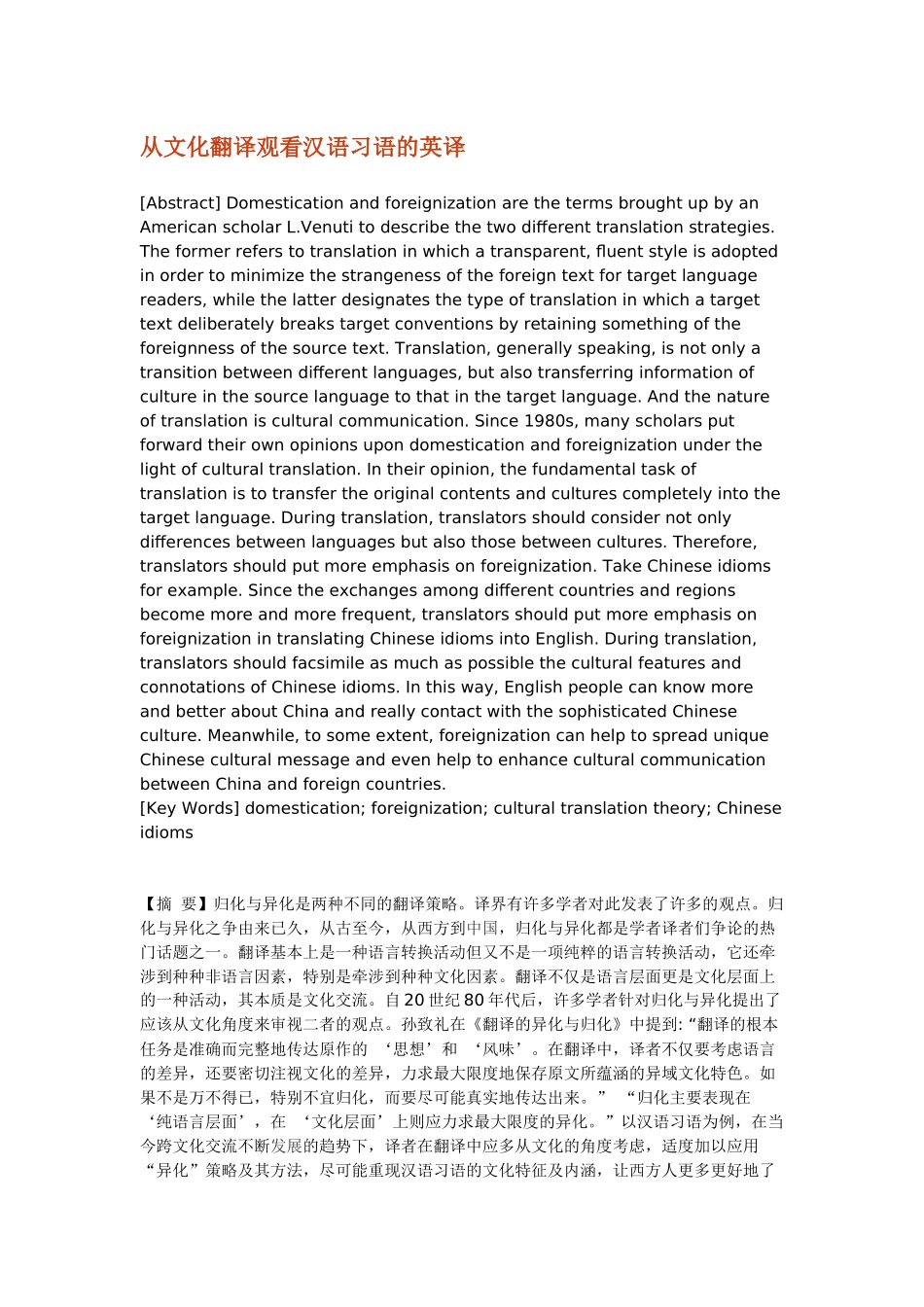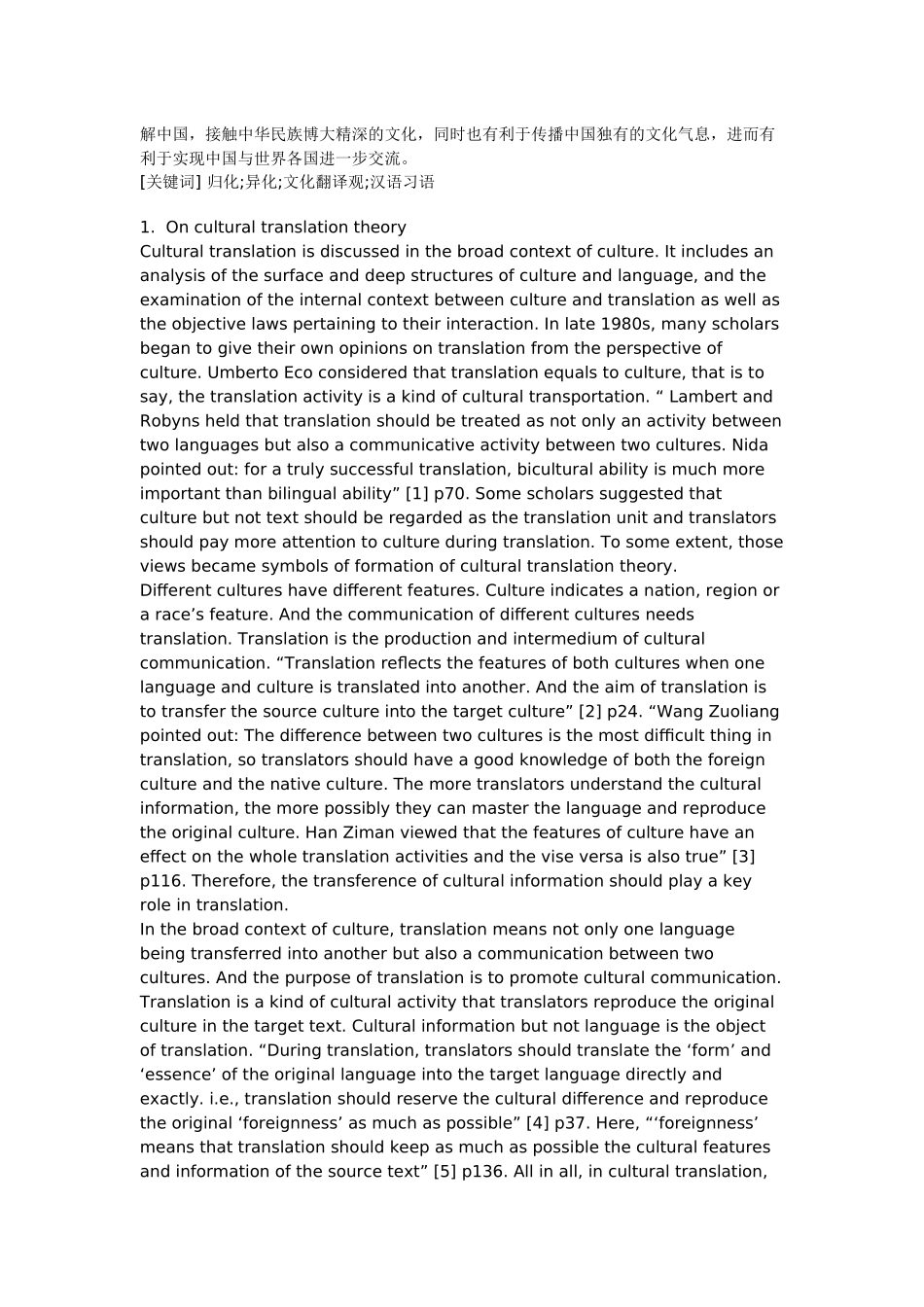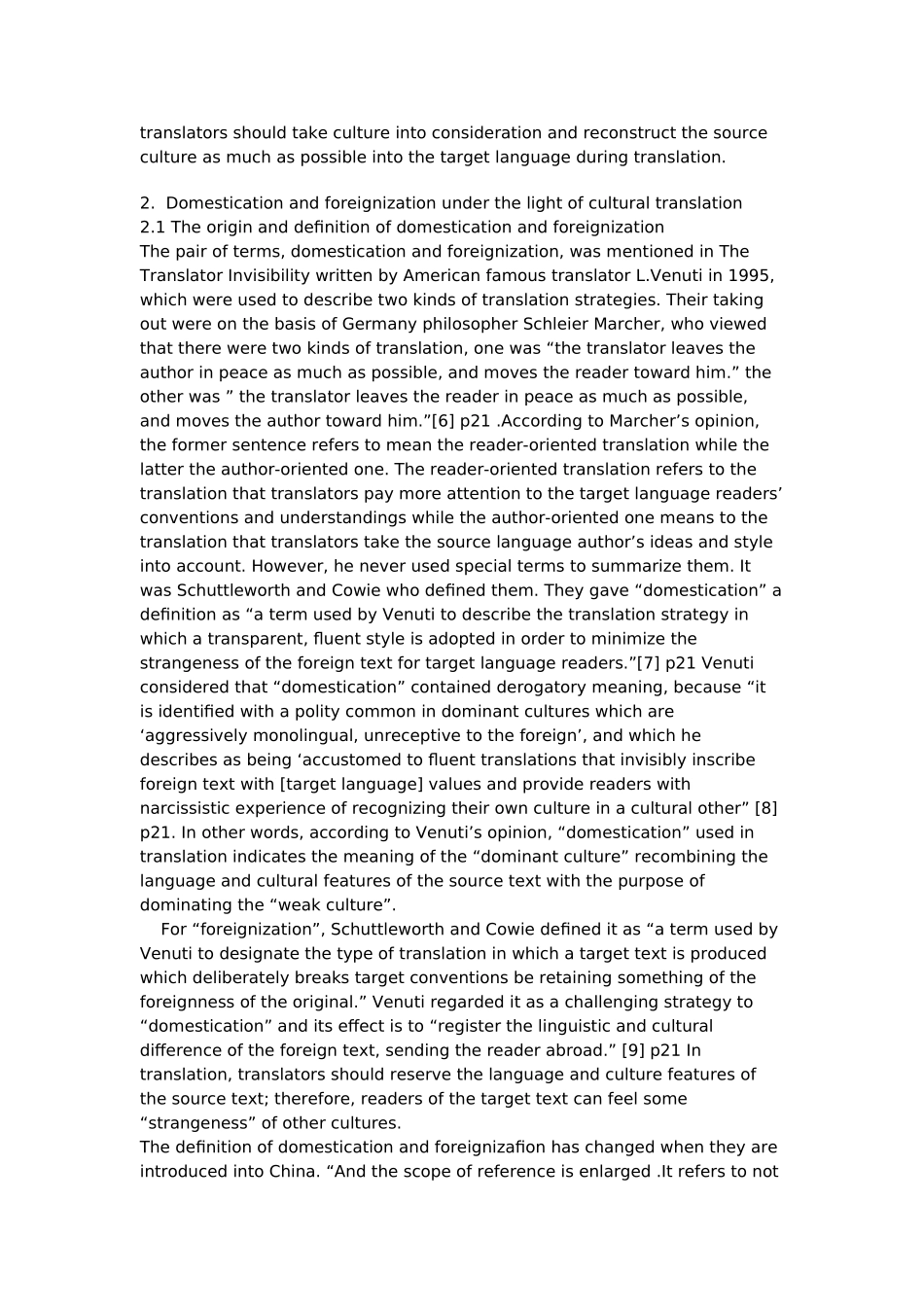从文化翻译观看汉语习语的英译[Abstract] Domestication and foreignization are the terms brought up by an American scholar L.Venuti to describe the two different translation strategies. The former refers to translation in which a transparent, fluent style is adopted in order to minimize the strangeness of the foreign text for target language readers, while the latter designates the type of translation in which a target text deliberately breaks target conventions by retaining something of the foreignness of the source text. Translation, generally speaking, is not only a transition between different languages, but also transferring information of culture in the source language to that in the target language. And the nature of translation is cultural communication. Since 1980s, many scholars put forward their own opinions upon domestication and foreignization under the light of cultural translation. In their opinion, the fundamental task of translation is to transfer the original contents and cultures completely into the target language. During translation, translators should consider not only differences between languages but also those between cultures. Therefore, translators should put more emphasis on foreignization. Take Chinese idioms for example. Since the exchanges among different countries and regions become more and more frequent, translators should put more emphasis on foreignization in translating Chinese idioms into English. During translation, translators should facsimile as much as possible the cultural features and connotations of Chinese idioms. In this way, English people can know more and better about China and really contact with the sophisticated Chinese culture. Meanwhile, to some extent, foreignization ca...


